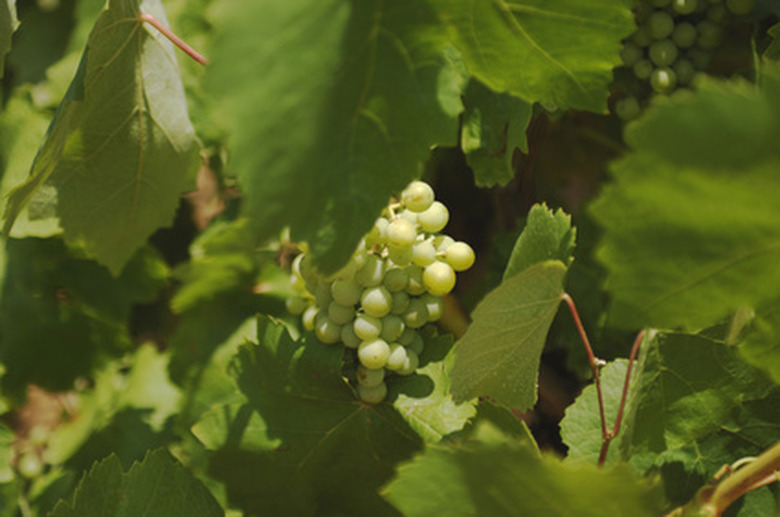Diseases Of Grape Vines
Grape vines are prone to numerous diseases, many of which are serious and can lead to crop loss. Plant the vines in well-drained soil in full sun, preferably in a north to south line for maximum exposure to the sun. Irrigate in early morning so the foliage can dry before the cooler nighttime hours. Prune the vines for optimum airflow and fertilize regularly. Remove and destroy diseased and dead canes to prevent the spread of infection.
Black Rot
The fungus Guignardia biowellii causes black rot, which is a devastating disease on grape vines in the eastern United States. The infection usually appears on the lower leaves as small circular reddish-brown spots. A black border develops around the spots and small pimple-like bumps grow in the reddish-brown area. Infected clusters of grapes shrivel and die. Regular applications of a fungicide approved for black rot on grape vines applied at the rate recommended by the manufacturer can prevent and control the disease.
- Grape vines are prone to numerous diseases, many of which are serious and can lead to crop loss.
- Regular applications of a fungicide approved for black rot on grape vines applied at the rate recommended by the manufacturer can prevent and control the disease.
Eutypa Dieback
Dieback caused by the fungus Eutypa armeniacae is a serious disease of grape vines. The leaves are small and yellowish and cup upward, and new shoots are stunted. Infected canes die and the disease spreads to other canes and the trunk. There is no treatment for Eutypa dieback and the plants should be removed and destroyed.
Peach Rosette Mosaic
Peach rosette mosaic is a soil-borne virus spread by dagger nematodes. The canes of infected grape vines grow crooked and cause the vine to grow in an umbrella shape. The canes have short internodes and distorted leaves. Vines infected with Peach rosette mosaic should be destroyed; do not replant the area for at least a year. If dagger nematodes are present, the soil should be fumigated.
- Dieback caused by the fungus Eutypa armeniacae is a serious disease of grape vines.
- Infected canes die and the disease spreads to other canes and the trunk.
Phomopsis Spots
The fungus Phomopsis viticola causes leaf and cane spots, as well as fruit rot on grape vines. The symptoms include small, angular dead spots on the leaves, and elongated brownish-purple lesions on the canes, tendrils and petioles. Lesions on the stems of the clusters result in fruit rot. Fungicides approved for Phomopsis on grape vines applied according to the manufacturer's instructions can prevent and control the disease.
